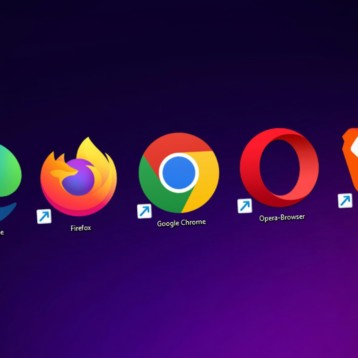
The world has changed. No matter who or where you are, the global pandemic will have touched your life in some way. Like many, you’re probably waiting patiently for it all to blow over so you can go back to your normal daily life again. But, here lies the important question – just how ‘normal’ will life be after the global lockdown is over? Some changes are obvious; lives will be lost, and economies will be tested. However, a second round of changes will also occur. Changes that are less focused on catastrophe, and more a testimony to the resilience and adaptability of humans.
One subject of these changes will undoubtedly be the internet. Businesses have shut down, and people have been sequestered in their houses. In response, most of us have turned to the web for our source of information, connection, and employment.
When the world reopens, what will happen to all the newly-discovered online potential? Here are our projections:
Growth of Online Creativity
Creativity has underlined civilization since the beginning of time. It’s our way to make sense of nonsensical things, and it’s a great skill to have in a crisis. Adweek said it best with this handy quote:
“Human creativity is built on our brain’s diffuse attention, inefficiency and lack of focus and can actually help get us out of this mess.”
You only have to log into social media to see the array of creative projects currently occurring. While academics and corporate employees use this time to hone their creative hobbies, professional artists have commissioned the internet to provide entertainment and relief for us all. This explosion of artistry is a reassuring result of a trying time in human history, but will it have long-lasting effects? Most likely.
Now the gamut for online concerts and video performances has broadened, this type of web-based creativity is here to stay. Maybe it will come in the form of internet tickets to live gigs or virtual walkthroughs of gallery shows. Perhaps singers will opt for bedroom performances over tour dates, and painters will expand their income with time-lapse videos and YouTube channels. New blogs, podcasts, shows, and websites are popping up every minute of every day.
Whatever the repercussions, there’s one certainty. The success and potential of online creativity is vast – and it’s not going anywhere once we can go outside again!
The Potential of WfH Options
Ever asked your boss if you could work from home, only to be told it wasn’t possible? Well, that excuse is not going to fly anymore. In numerous countries, offices are shut, and employees are working from their own computers in the comfort of their houses. And, guess what? The world hasn’t collapsed.
Not only is it seemingly simple to set up a remote workforce, but employers are also seeing the benefits it can bring. Reduced office costs, less reliance on desk space limitations, and no restrictions on where you can hire from, all make good financial sense for any business. In fact, a 2019 study showed that productivity increased by 85% when they offered employees more flexibility.
Before, the resistance to WfH set-ups was primarily due to an irrational fear of negative results. Now that most businesses have seen the practicalities of how it can work, it’s likely they retain this option for employees moving forward.
The Age of the Conference Call
Before 2020, Zoom was the territory of remote workers and international corporations. Today, it’s used by friends, personal trainers, grandmas, and toddlers. We’ve seen conference calls for dance classes, yoga, AA meetings, training conferences, mum’s groups, and much, much more. The statistics tell the full scale of the explosion. The platform that previously had 10 million users now boasts over 200 million. This rise is staggering and is sure to have repercussions going forward.
What will this change signify long term? Potential. Now the world knows how much we can achieve remotely, there’s no end to the possibility. Conference calls completely negate geographical restrictions. You can attend a meeting taking place in China, visit an exercise class in Australia, then check-in with your friend in Canada, all from your own sofa.
More Investment in Infrastructure
The three points above all signal an explosion in the diversity of our online lives. We can see the beginnings of their impact already, but more changes will have to occur down the line. With the sharp rise in usage, we’re going to need greater investment in infrastructure to keep up with the growing data demand.
Let’s take California as an example. The state already has impressive online capabilities, with most customers using fiber optic and average upload speeds of 32Mbps. At surface level, it appears California has more than enough capacity to move towards a more data-heavy way of living. However, not all areas enjoy the same luxury. Smaller regions, such as Almanor and Salton City, see average speeds of just 17-19Mbps. If one of the most technically-connected states in the world has these data black spots, then less-funded infrastructures could really struggle with a move towards a culture with higher streaming, VoIP, and downloads.
A Population Explosion for the Online Community
The last few decades have seen many companies jump on the technology bandwagon, but the pandemic has sparked an explosion in this process. The infrastructure we create during this time will affect internet practices for many years to come. Now the technology is in place, it will only grow and develop as we move past lockdown and into the future.







![10 Top Game Sites Not Blocked By School [2024 Updated]](https://thefutureofthings.com/wp-content/uploads/2024/10/image-25-358x358.png)


